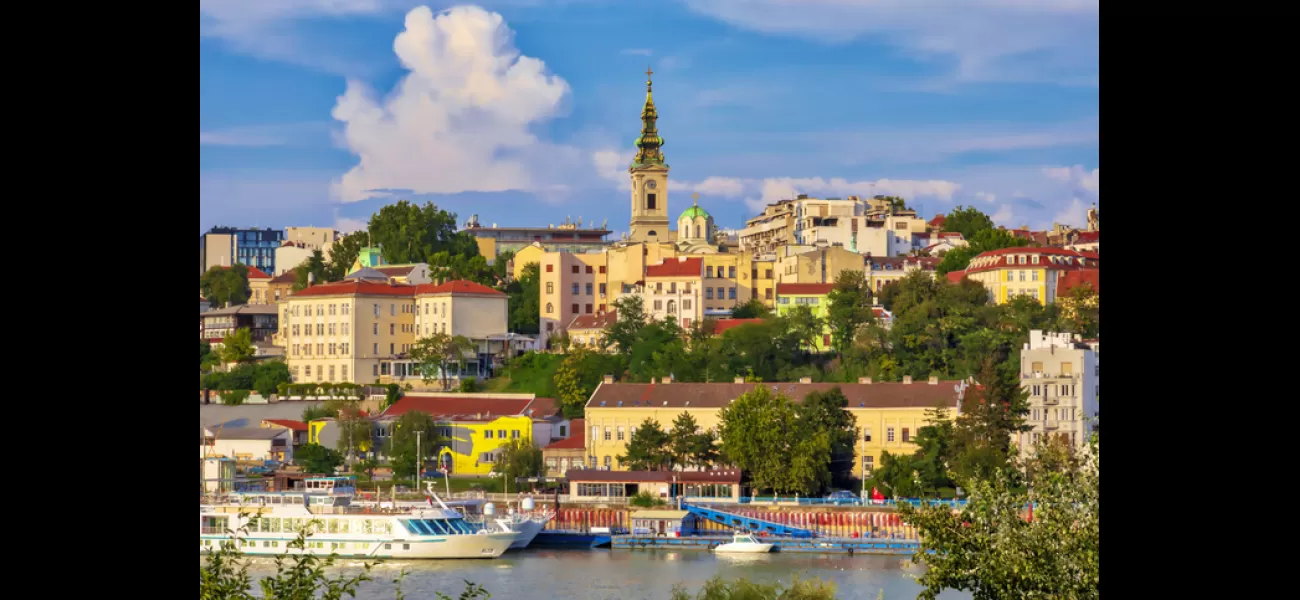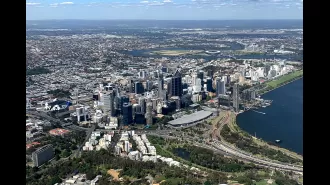Discover the top spots for food, drinks, and dancing in Serbia's lesser-known city break destination.
Returning to Belgrade after 13 years to see how the city has changed since my childhood.
January 14th 2024.

Belgrade, the capital of Serbia, is known for its vibrant nightlife and rich culture. Every city has its own unique soundscape, shaped by its diverse characters, deep-rooted culture, and complex history. Tonight, as I step into the BAM Club, I am greeted with the sound of a violin being played by a half-toothless musician, affectionately known as Paganini after the famous Italian composer. The dimly lit club is filled with the smell of tobacco, taking me back to my childhood memories. In Serbia, smoking is still allowed in bars and restaurants, despite the ongoing debate on whether it should be banned. Alongside me is my friend Camilla, a fellow journalist who shares my love for all things Balkan and has recently moved to Belgrade.
One of the must-visit places in Belgrade is the traditional kafana Znak Pitanja. It is a perfect spot to try the local house wine and immerse yourself in the traditional eating, drinking, and dancing culture. Camilla and I first met at the Foreign Office earlier this year during a cocktail party for Albania's prime minister. We bonded over our mutual love for the region, rakia (a traditional fruit brandy), and turbo-folk music - a fusion of Serbian folk and modern genres like hip hop and electronic music. This genre originated in the 1980s as an attempt to modernize traditional sounds and has since gained popularity in other Balkan countries like Bulgaria (called chalga), Romania (manele), and Albania (tallava). In Serbia, it was popularized by singers like Lepa Brena and Ceca, the second wife of an alleged mobster and war criminal. Despite its controversial history, turbo-folk's catchy beats and homoerotic music videos have made a comeback among the younger generation in Serbia.
Belgrade is a city that is easy to navigate, and many historical landmarks are located in the city center. I highly recommend taking an early morning walk to experience the city as it wakes up. The BAM Club is chaotic, with mostly locals coming in as the night goes on. The band, led by Paganini, plays songs that I am not familiar with, but when they start playing the Italian Partisan song "Ciao Bella," I can't help but join in. As I try to follow the rhythm, I realize that no one around me is judging my dancing skills, even though they can tell I am a tourist. After a few bottles of Zaječarsko pivo (a popular local beer), I head home, sweaty and exhausted, but with unforgettable memories of dancing to turbo-folk until the early hours of the morning.
Belgrade also has many cultural attractions that are worth visiting. One of my favorites is the Church of Saint Sava, one of the largest Eastern Orthodox churches in the world. It is an architectural masterpiece that is still under construction, dedicated to a 12th-century prince and saint. Another must-see landmark is the Belgrade Fortress, located at the confluence of the Sava and Danube rivers. It is a historical complex that reflects the city's turbulent past, having been destroyed and rebuilt over 40 times.
During my visit to Belgrade, I stayed at the Boutique Hotel Museum, located in the city center. However, I would not recommend it as the rooms were small and overpriced. There are plenty of other luxurious options available for a similar price. Belgrade is also known for its vibrant food scene, offering a mix of traditional and modern cuisines. A visit to a kafana, a type of traditional tavern, is a must for anyone looking to experience the true Serbian joie de vivre. Znak Pitanja, dating back to the 19th century, is one of the city's most well-known kafanas, serving hearty dishes like ajvar (a pepper-based spread), sarmi (stuffed cabbage rolls), and grilled hard white cheeses. For a more modern take on traditional food, Iva New Balkan Cuisine is a highly recommended spot. This bijou restaurant, run by chef Vanja Puškar, has made it onto Michelin's list of recommended restaurants. With the favorable exchange rate, it is an opportunity to try reinvented dishes at a fraction of the cost.
Belgrade is a city that has something for everyone. Whether you are interested in exploring its rich history, indulging in the local culture and cuisine, or experiencing its vibrant nightlife, this city will not disappoint. So, if you are planning a trip to Belgrade, make sure to visit my favorite spots like the BAM Club, Znak Pitanja, and the Belgrade Fortress. And if you happen to see Paganini, please say hello from me.
One of the must-visit places in Belgrade is the traditional kafana Znak Pitanja. It is a perfect spot to try the local house wine and immerse yourself in the traditional eating, drinking, and dancing culture. Camilla and I first met at the Foreign Office earlier this year during a cocktail party for Albania's prime minister. We bonded over our mutual love for the region, rakia (a traditional fruit brandy), and turbo-folk music - a fusion of Serbian folk and modern genres like hip hop and electronic music. This genre originated in the 1980s as an attempt to modernize traditional sounds and has since gained popularity in other Balkan countries like Bulgaria (called chalga), Romania (manele), and Albania (tallava). In Serbia, it was popularized by singers like Lepa Brena and Ceca, the second wife of an alleged mobster and war criminal. Despite its controversial history, turbo-folk's catchy beats and homoerotic music videos have made a comeback among the younger generation in Serbia.
Belgrade is a city that is easy to navigate, and many historical landmarks are located in the city center. I highly recommend taking an early morning walk to experience the city as it wakes up. The BAM Club is chaotic, with mostly locals coming in as the night goes on. The band, led by Paganini, plays songs that I am not familiar with, but when they start playing the Italian Partisan song "Ciao Bella," I can't help but join in. As I try to follow the rhythm, I realize that no one around me is judging my dancing skills, even though they can tell I am a tourist. After a few bottles of Zaječarsko pivo (a popular local beer), I head home, sweaty and exhausted, but with unforgettable memories of dancing to turbo-folk until the early hours of the morning.
Belgrade also has many cultural attractions that are worth visiting. One of my favorites is the Church of Saint Sava, one of the largest Eastern Orthodox churches in the world. It is an architectural masterpiece that is still under construction, dedicated to a 12th-century prince and saint. Another must-see landmark is the Belgrade Fortress, located at the confluence of the Sava and Danube rivers. It is a historical complex that reflects the city's turbulent past, having been destroyed and rebuilt over 40 times.
During my visit to Belgrade, I stayed at the Boutique Hotel Museum, located in the city center. However, I would not recommend it as the rooms were small and overpriced. There are plenty of other luxurious options available for a similar price. Belgrade is also known for its vibrant food scene, offering a mix of traditional and modern cuisines. A visit to a kafana, a type of traditional tavern, is a must for anyone looking to experience the true Serbian joie de vivre. Znak Pitanja, dating back to the 19th century, is one of the city's most well-known kafanas, serving hearty dishes like ajvar (a pepper-based spread), sarmi (stuffed cabbage rolls), and grilled hard white cheeses. For a more modern take on traditional food, Iva New Balkan Cuisine is a highly recommended spot. This bijou restaurant, run by chef Vanja Puškar, has made it onto Michelin's list of recommended restaurants. With the favorable exchange rate, it is an opportunity to try reinvented dishes at a fraction of the cost.
Belgrade is a city that has something for everyone. Whether you are interested in exploring its rich history, indulging in the local culture and cuisine, or experiencing its vibrant nightlife, this city will not disappoint. So, if you are planning a trip to Belgrade, make sure to visit my favorite spots like the BAM Club, Znak Pitanja, and the Belgrade Fortress. And if you happen to see Paganini, please say hello from me.
[This article has been trending online recently and has been generated with AI. Your feed is customized.]
[Generative AI is experimental.]
0
0
Submit Comment





